By Manzanillo Sun Writer From the October 2016 Edition
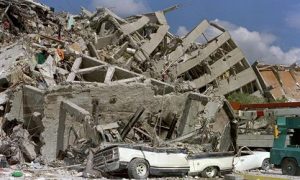 Though now 31 years have past, the following extract from an article in The Guardian reminds us of just how resilient Mexicans are. If you meet anyone from the Mexico City area, they can likely tell you first hand stories of just how difficult this was to overcome. Having lived through several earthquakes myself in central Mexico, I can tell you that people from Mexico City jump a little faster than the rest of us when they feel the shaking.
Though now 31 years have past, the following extract from an article in The Guardian reminds us of just how resilient Mexicans are. If you meet anyone from the Mexico City area, they can likely tell you first hand stories of just how difficult this was to overcome. Having lived through several earthquakes myself in central Mexico, I can tell you that people from Mexico City jump a little faster than the rest of us when they feel the shaking.
The devastation of the 1985 Mexico City earthquake was swift. In just over a minute in the early hours of 19 September, while the city was still asleep 100,000 houses crumbled, 5,000 people died and roughly five million residents were left without electricity or potable water. On the Televisa broadcast that morning, newscaster Lourdes Guerrero maintained her smile as the room around her began to move. “It is still 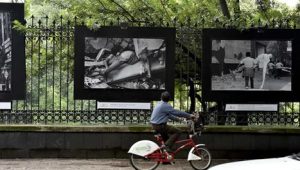 shaking a little,” she said into the camera. “But we must remain calm. We will wait a second so that we can continue talking.” The feed cut to static. Just a few blocks away, the historic city centre, or El Centro, was in pieces. Cathedrals, hospitals, museums and other monuments to Mexican history were destroyed. The Hotel Regis, once the neoclassical centre piece of the downtown area, was all rubble and ash.
shaking a little,” she said into the camera. “But we must remain calm. We will wait a second so that we can continue talking.” The feed cut to static. Just a few blocks away, the historic city centre, or El Centro, was in pieces. Cathedrals, hospitals, museums and other monuments to Mexican history were destroyed. The Hotel Regis, once the neoclassical centre piece of the downtown area, was all rubble and ash.
Situated between three large tectonic plates, Mexico is a seismological nightmare. Mexico City is its most vulnerable city, built as it is on a sinking lake bed. With a magnitude of 8.1, the 1985 earthquake pushed Mexico far past its breaking point.
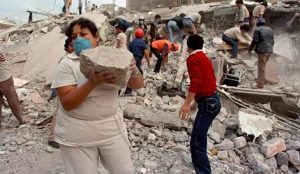 Three decades later, however, El Centro bears almost no trace of this devastation. With millions of dollars poured into development projects by Mexican billionaire Carlos Slim, the rubble of 1985 has been replaced by new sidewalks, public furniture, freshly painted tenements and outdoor WiFi. City officials maintain that building codes are enforced, and the mayor’s office has developed a six point plan in case of future emergencies. In the 30 years since the earthquake, the city government has managed to transform Mexico City’s wealthy centre into a major tourist destination.
Three decades later, however, El Centro bears almost no trace of this devastation. With millions of dollars poured into development projects by Mexican billionaire Carlos Slim, the rubble of 1985 has been replaced by new sidewalks, public furniture, freshly painted tenements and outdoor WiFi. City officials maintain that building codes are enforced, and the mayor’s office has developed a six point plan in case of future emergencies. In the 30 years since the earthquake, the city government has managed to transform Mexico City’s wealthy centre into a major tourist destination.
Yet, in the peripheral zones, beyond the tourist’s reach, informal settlements continue to proliferate. There, 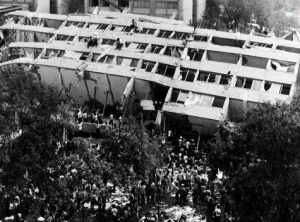 codes and regulations are irrelevant. Residents build with whatever materials they can find and afford, and they continue to struggle to gain access to basic services such as water and electricity.
codes and regulations are irrelevant. Residents build with whatever materials they can find and afford, and they continue to struggle to gain access to basic services such as water and electricity.
For all the improvements of the last 30 years, roughly 60% of the city is made up of these unregulated, informal and vulnerable zones.
The growth of these settlements over the last three decades attests to the persistence of poverty and inequality in Mexico City and as a result, its vulnerability to its next big earthquake.
The earthquake
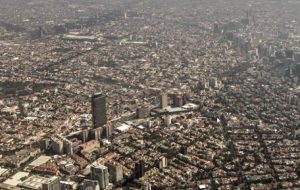 In 1985, Mexico City was the world’s largest urban area. With more than 16 million residents, the city had been growing at a ludicrous rate over 4% annually through the 1970s, with a growth rate of close to 40% in the city’s periphery.
In 1985, Mexico City was the world’s largest urban area. With more than 16 million residents, the city had been growing at a ludicrous rate over 4% annually through the 1970s, with a growth rate of close to 40% in the city’s periphery.
Its economic boom, known as the Mexican Miracle, encouraged heavy migration, and few politicians were eager to stem the flow of incoming labour with strict building codes or regulations. As a result, informal settlements exploded across the city, from expanding tenements in the city centre to makeshift structures along its outer rings.
The decades since
In the three decades since, reconstruction efforts have expanded. The city centre whose historic buildings were hit hard by the earthquake has been completely remodelled. In 2002, the city government launched a public private partnership with Carlos Slim’s nonprofit foundation, Fundación del Centro Histórico de la Ciudad de Mexico, to funnel resources into the downtown area. Together with a wave of private investment, the project has installed a new telecommunications infrastructure, renovated old properties and constructed new pedestrian malls.
Meanwhile, the government has made major strides in earth-quake preparedness. They have established monitoring systems to detect earthquakes before they arrive, new agencies to coordinate responses to a potential earthquake and they have raised crucial funds in case of future emergency. When a 7.4-magnitude quake hit in March 2012, the city was well prepared, initiating its six point emergency plan and evacuating public buildings. There were no casualties.
The spirit of the Damnificados
The Solidarity Plaza in Mexico City’s El Centro is a simple monument. Three large copper hands reach up from a cement block to grip a flagpole. A few feet forward, the date “Septiembre 19 de 1985” is inscribed in the cement, a commemoration of the earthquake that demolished the Regis Hotel that once stood there. It is intended to remind passersby of the courage of the damnificados (those affected by a disaster or crisis), and the progress that has been made as a result of their fight. Trees line the perimeter and, on most days, it is a blurry bustle of tourists and office workers.
Yet the spirit of the damnificado movement has all but vanished. Following the earthquake of 1985, hundreds of thousands of Mexico City residents mobilised to improve housing conditions for the poor.
While the government has focused on beautifying El Centro, Mexico City’s civil society has in many ways grown indifferent to the poverty, inequality and vulnerability that continue to be set it.
To learn from the Mexico City earthquake of 1985, then, will require more than reconstruction or regulation. If much of the damage of the earthquake was caused by dangerous, informal construction, then the government must address directly the reasons why residents resort to these construction methods displacement, poverty and inequality. To address these, the city must first discard its zero tolerance approach to work proactively with its low income communities to develop infrastructure, services and homes that are safe for residents in the long term. And it must protect its residents from the rising property prices that displace them from the centre and give rise to vulnerable settlements in the first place.
Download the full edition or view it online
Manzanillo Sun’s eMagazine written by local authors about living in Manzanillo and Mexico, since 2009




